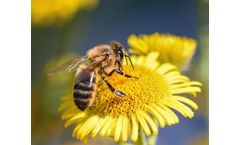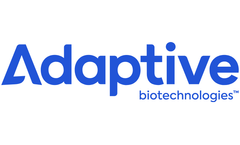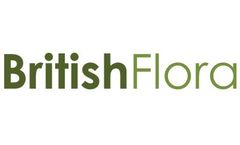Honey Bees Articles & Analysis
23 articles found
For instance, pheromone of the stingless bee Melipona solani has only cis-2-heptanol and no trans-2-heptanol, but insect antennal potential indicates that its group is sensitive to both cis-2-heptanol and trans-2-heptanol stimulation. ...
Royal Jelly is a gelatinous, milky substance produced by worker bees to feed the queen and larvae. It is also known as queen bee jelly, bee milk, or royal pap. ...
The 20th of May marks World Bee Day, aiming to raise awareness about the importance of bees in our ecosystem. Bees are vital to pollinate the food we eat as well as the trees and flowers which are habitats for wildlife, thanks to bees we can enjoy a range of foods from apples to coffee. ...
With two hives already in place, our headquarters is home to approximately 100,000 bees. We’ll be hosting workshops so Adaptive staff can learn more about the bees and their contribution to biodiversity and sustainability. Of course, we’re looking forward to harvesting and jarring honey right on our own rooftop! Additionally, ...
All regulatory data requirements for assessing pollinators have now been addressed and the EPA has adequate data to demonstrate that there will be no unreasonable adverse effects to honey bees resulting from the expanded registration of sulfoxaflor. ...
Background - Regulation European Union (EU) Worldwide news about unusual high death rates of bees has been published continuously over the last 10 years. In late 2006, the USA reported a drastic disappearance of western honey-bee colonies. ...
Geological Survey (USGS) published a study on the result of land-use changes on North and South Dakota commercial honey bee colonies in the journal Proceedings of the National Academy of Sciences. ...
Greenhouse Vegetables Identify 12 month production strategies Improve energy efficiency by 20 to 30% Improve water and nutrient use efficiencies by 20% Honey Bees and Pollination Research and develop registered products that can be used to treat for varroa mites mid-season and/or during honey flow. Discouraging varroa mite population ...
The honey’s renowned medicinal value and appealing packaging helps it to fetch more money per liter on the market than honey from commercial bees. ...
ByEnsia
EPA also states that following the receipt of public comments on this Assessment by December 2016, it plans to issue a revised Preliminary Ecological Risk Assessment that will: “(i) consider any comments or information submitted in response to this bee-only preliminary risk assessment; (ii) incorporate additional data EPA anticipates to receive that is relevant to ...
Metal pollution has been increasing rapidly over the past century, and at the same time, the human population has continued to rise and produce contaminants that may negatively impact pollinators. Honey bees (Apis mellifera L.) forage over large areas and can collect contaminants from the environment. ...
This study was designed to assess homing behaviour of bees foraging on winter oilseed rape grown from seed treated with thiamethoxam (as Cruiser OSR) with one field drilled with thiamethoxam treated seed and two control fields drilled with fungicide‐only treated seed. Twelve honeybee colonies were used per treatment group, 4 each located at the field edge (on‐field site), at approximately 500m ...
The various incarnations of the sustainable food movement need a science with which to approach a system as complex as food and farming. This story was co-published with Food Tank, a nonprofit organization focused on building a global community for safe, healthy, nourished eaters. Thumb through U.S. newspapers any day in early 2015, and you could find stories on President Obama’s ...
ByEnsia
The honey bee, Apis mellifera L. is the most important managed pollinator species worldwide and plays a critical role in pollination of a diverse range of economically important crops. ...
In pesticide risk assessment, the estimation of the routes and levels of exposure is critical. For honey bees, the toxicity of pesticides is assessed by thorax contact to account for all possible contact exposures of bees subjected to a pesticide spray. In this study, we tested 6 different active substances with different hydrophobicity, and ...
Bees play a crucial role in pollination and generate honey and other hive products; therefore, their worldwide decline is cause for concern. New broad‐spectrum systemic insecticides like fipronil can harm bees, and their use has been discussed as a potential threat to bees' survival. ...
Honeybee waggle dancers are helping researchers identify conservation best practices. The question scientists at the University of Sussex in the U.K. had was simple: Where do honeybees find food? But finding a way to answer that simple question seemed not so simple. Tiny radio or GPS trackers have a limited range, and it would take huge amount of work to survey fields on foot. Instead, ...
ByEnsia
The European honeybee, Apis mellifera, is an important pollinator of agricultural crops. Since 2006, when unexpectedly high colony losses were first reported, articles have proliferated in the popular press suggesting a range of possible causes and raising alarm over the general decline of bees. Suggested causes include pesticides, genetically modified crops, habitat fragmentation, and ...
In the first stage, honeybee colonies were exposed to a commercial formulation of glyphosate applied to flowering Phacelia tanacetifolia with glyphosate residues quantified in relevant matrices (pollen and nectar) collected by foraging bees on Days 1, 2, 3, 4 and 7 post‐application and glyphosate levels in larvae were measured on days 4 and 7. ...
The Funeralcare Co-operative Plan Bee Wildflower Meadow Creation As part of the ambitious Plan Bee project (which aims to save the plight of honey bees and pollinators across the UK), the Funeralcare Co-operative Woodland Burial Sites have been awarded funding to create bee friendly wildflower corridors. ...









